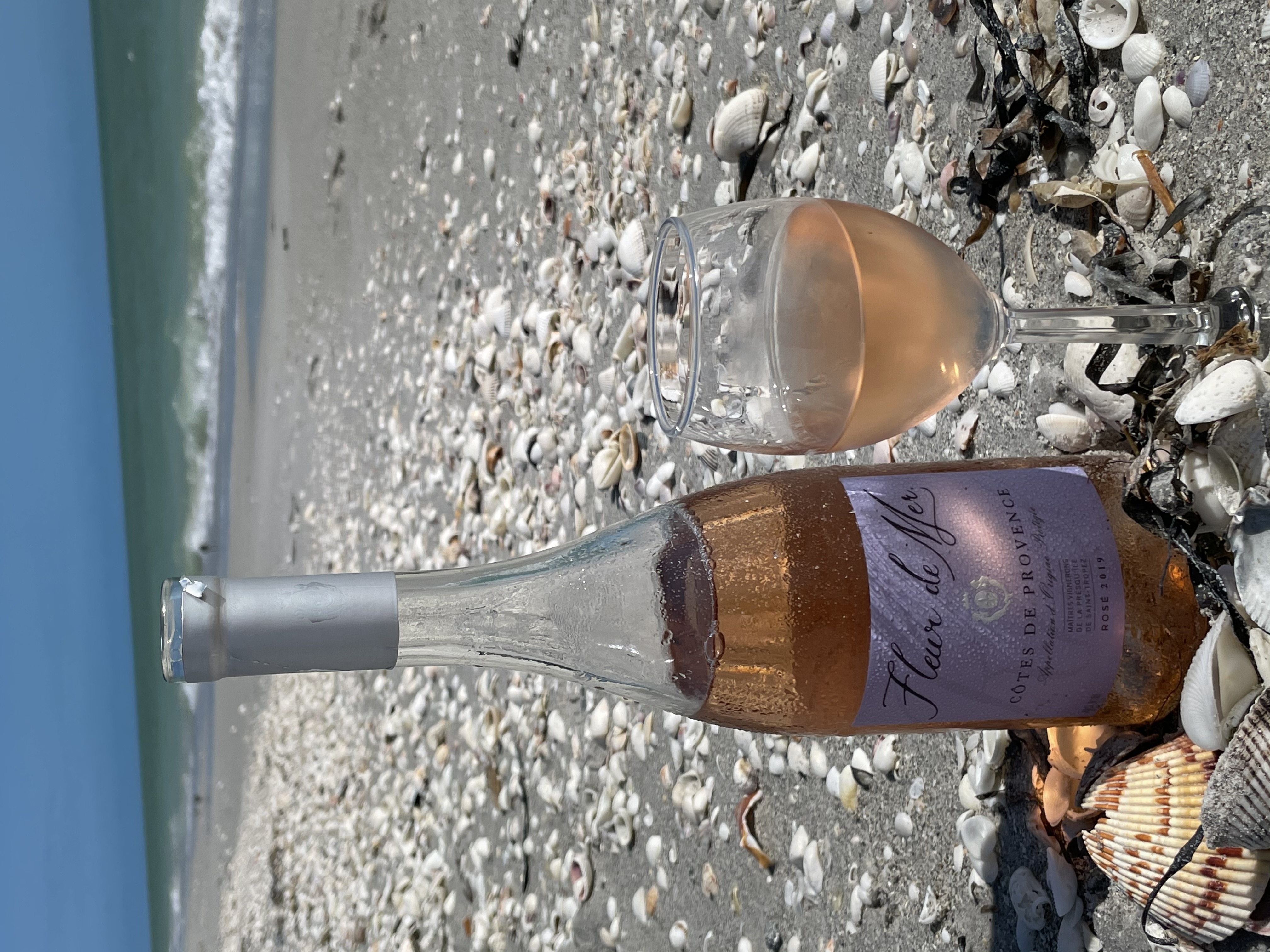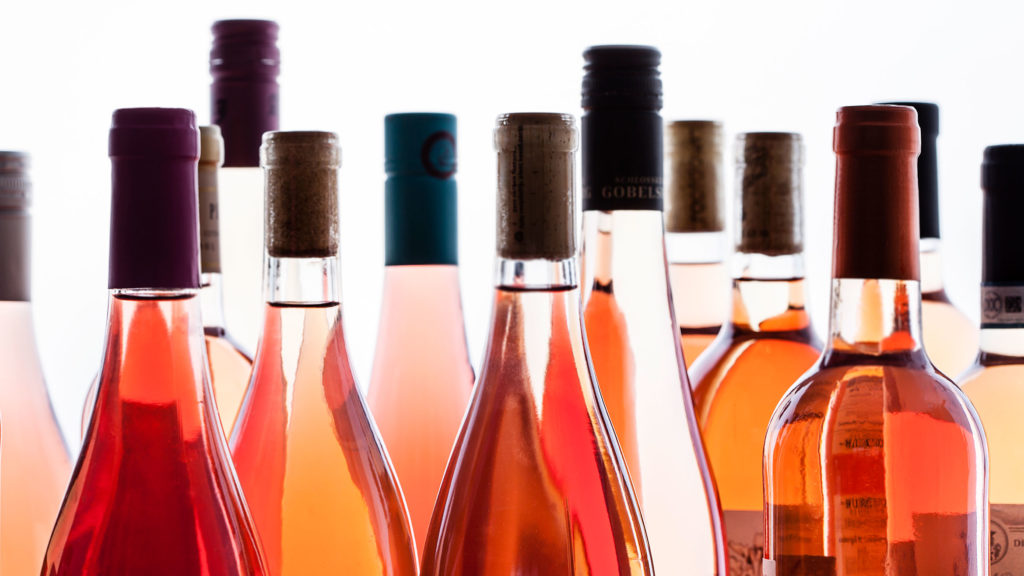Rosé wines are one of my favorite things to drink once the weather gets warmer, my palate changes to lighter foods and I steer away from heavier reds. You may have already discovered how fabulous they are too. Did you ever wonder why this wine is pink? Rosé wines are NOT made from a pink grape…it is just a way of making light colored wine from black grapes.
The first thing to know is there are lots of different rosé wines. They can vary in color, flavor and sweetness, all depending on how they are made and from what varietal/s (type of grapes) they are made from. And it is not a new hip kind of wine – it has been made for thousands of years. One thing I learned during my French Wine Scholar studies is that much of the ancient wine the Greeks made along the Mediterranean coast was not deep red as we might expect but pink. The trend to pink wine has become a phenomenon. You can now find rosés from just about every wine region in the world.
What grapes are used for rosé?
Just about any black varietal that can be made into red wine can be made into a rosé. In Provence, a region that specializes in these wines, the varietal is usually Grenache. There are wines made from Pinot Noir, Merlot, Cabernet Franc, Cabernet Sauvignon, Syrah, Malbec, Sangiovese, Tempranillo and the list goes on. Whatever is grown in the region to make red wine will often be made into a rosé as well.
How is it made?
The most common way to make rosé is to limit the time the juice spends in contact with the skins – skins give color to red wine and also tannins. Grapes are crushed, and fermentation starts to take place on the skins with contact for anywhere from a few hours to several days. Once the desired level of pink is achieved, the grapes are pressed off the skins and the wine is made in s imilar way to white wine.
Direct press is the way many of the lighter colored wines are made, and if you choose one from Provence it will almost always be vinified in this way. The destemmed or whole bunches of grapes are pressed immediately after harvest to create a very pale pink juice, which is then vinified like a white wine. Sometimes these wines are called vin gris (grey wine), although this term is not regulated and may not mean it was made by direct press.

Other wines are made using the saignée method. In French this means “to bleed,” and this method starts off just like making red wine. To make this style of wine you start by crushing black grapes in a vat in contact with their skins (which is where the red color of the wine comes from). After a few hours of soaking, part of the wine is “bled off” and the remainder is vinified as a red wine. Essentially you get two kinds of wine from one batch of grapes. This kind of rosé has more color and flavor because it has spent more time in contact with the skins, where much of the color, phenolics and tannins of the grape are located.
In some areas of Spain, for example Cigales, they make a rosado wine with a method called clarete. To create this deeper pink wine, black grapes AND white grapes are co-fermented in a proportion that creates the desired color and taste profile. These wines are not as light and delicate as direct press wines, but quite delicious and worth a try.

There is another method that is used most often in Champagne, where it tends to be the norm when making that wonderful pink bubbly. It is called rosé d’assemblage, and that means it is a blended product where a bit of Pinot Noir, Pinot Meunier or both, is added into the base white champagne blend. It can be from 6-25% and the recipe, like all blends from champagne houses is a big secret!
Interesting fact…there is a big market for rosé champagne in Japan, where they pair it with sushi. Worth a try?
The blending method is not allowed in the EU with the exception of Champagne, and it is not common (although some New World high volume producers do add red wine to white to create pink wine).
While there was a trend for sweeter pink wines (remeber the good old days or White Zinfandel?), most rosé wines on the market now tend to be on the drier side, as this crisp, acidic wine can be very refreshing on its own in the warm weather as an aperitif. But don’t save it just for happy hour…rosés pair well with seafood and lighter summer meals like grilled chicken, salads, pasta and even vegetarian meals.
When you go to the wine shop to look for choices, Provence will have the biggest offerings, but look for other areas in France like Tavel, Lirac, the Loire and Pays d’Oc to compare. Then globe trot a bit – you’ll find great ones from California, Spain, Italy, Australia and elsewhere. One of my favorites last summer was a rosé of Cinsault, a southern French varietal, made in New Zealand! No matter where it is from, you’ll find a rosé (or two or three) that will become your go-to summer beverage.
Note: Names for pink wines vary by country!
- Rosado in Spain
- Chiaretto. Ramat or Rosato in Italy
- Rosé in France and other countries like the US
- Oil de perdrix “Partridge Eye” in France
- Blush wine in English speaking countries





